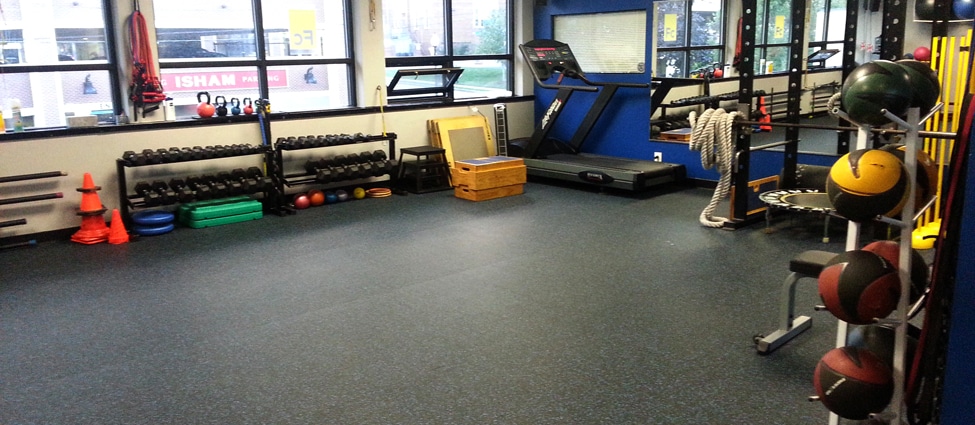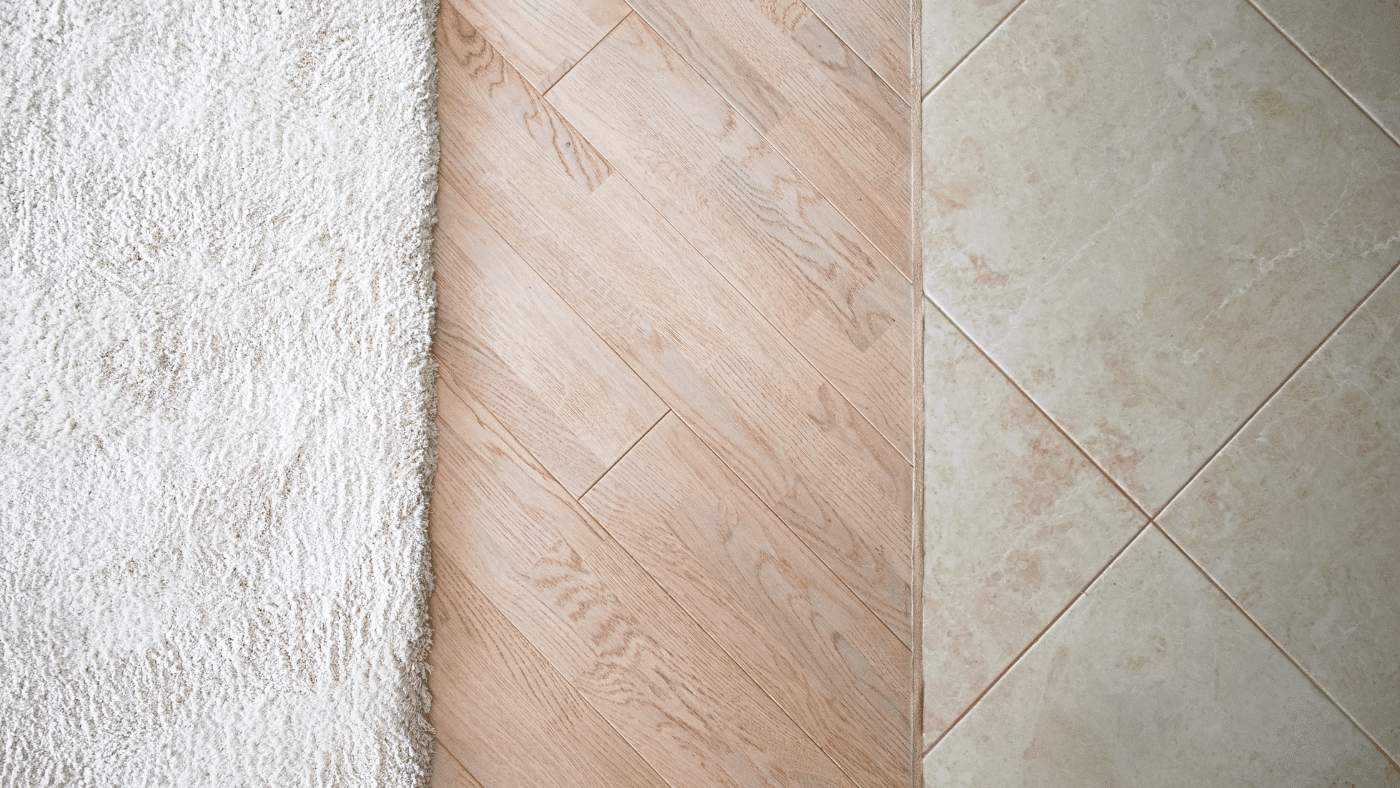Flooring is a critical element of any construction project, whether it be residential or commercial. It is the foundation upon which everything else is built, and its quality and durability can have a significant impact on the overall success of the project. Choosing the right flooring material is essential to ensure safety, functionality, and aesthetics. The following article is a quick overview to help navigate the world of flooring. Flooring is sometimes overlooked and often an afterthought, while other times a design driven feature. Given the wide range of flooring options on the market, selecting the best type for your residence or place of business can be challenging. Every style of flooring, from carpet and tile to hardwood and laminate, has specific advantages and disadvantages. In this post, we’ll give an overview of some of the most common flooring varieties, outlining their qualities, sturdiness, and upkeep needs.
What is Flooring?
- Flooring is the general term used for a permanent covering of a floor.
- Floor covering is a generic term used to describe any finish material applied over a floor structure to provide a walking surface.
Both terms may be used interchangeably; however, floor covering refers more to the loose-laid materials.
Types of Flooring Categories
Carpet
- Carpet is a soft floor covering made of bound fibers.
- Carpeting refers to wall-to-wall coverage versus a rug which is used to cover a space.
- Installation may be performed via tackless strips or directly glued down.
- Carpets may provide padding against sound.

Wood
- Hardwood
- Oak, cherry, walnut, hickory, maple, etc.
- Softwood
- Pine, fir, cedar, redwood, spruce, cypress, etc.
- Engineered hardwood
- Made of compressed wood, plywood, and fiber board with a wood veneer
- Cork
- Bamboo

Resilient
- Vinyl
- Vinyl Composition Tile (VCT), Luxury Vinyl Tile (LVT)
- Linoleum
- Similar to vinyl, but made out of an all natural material with wood flour, pine resin, and linseed oil

Image Source: ozburn-hesseycompany
Laminate
- Compressed fiberboard plank with an image of a material affixed and coated for durability
- Can be made to look like wood, tile or stone
- Installation may be glued or floated

Image Source: actionflooring
Resinous
- Hardened flooring connected with resins, (i.e., epoxy, traffic coating, etc.)
- Terrazzo
- Epoxy or cement, with chips of marble, glass, shells, quartz, granite, etc.
- Ground and polished to a finish and often found in public and municipal public spaces

Concrete
- Can be left unsealed, sealed, stained, stamped, or formed into tiles
- Concrete can also be polished to a finish, with color integrated into the concrete or applied to the surface with dye

Image Source: allthingsflooring.com
Tile
- Ceramic and porcelain
- Both of these types of tile are made out of hardened clay
- Porcelain is composed of a finer clay and baked at a much higher temperature, significantly increasing its strength and durability
- Pavers/brick
- These are installed similar to tile, often for interior and exterior applications

Stone
- Tiles or slab
- A similar installation to tile; however, made from a natural or manufactured stone, either in tiles and slabs

Image Source: countertopspecialty
Rubber/Specialty
- Fitness and athletic
- Indoor/outdoor
- composite decking or artificial grass

Image Source: flooringinc.com
Considerations for the right type of floor
When deciding on the type of floor for a project, there are different things to take into consideration.
The Importance of Functionality
Knowing the purpose of your building or space is paramount when evaluating the function of the specific flooring used. Different types of flooring have different functionality. For example, carpet floors may be used to mitigate sound from downstairs neighbors, or in places that experience cold temperatures. Tile or stone may be used in areas prone to water-usage, since tile is easier to maintain and take care of. On the contrary, owners may opt for an industrial look and choose polished concrete flooring for the restroom areas, or floor-wide, since it may be easier to clean than the grout lines found within tiles.
The Impact of Acoustics on Flooring
If you’ve ever lived in a noisy area, then you may know that sound travels very well through walls and buildings. Similarly when choosing the windows of your building and opting for double-pane windows to reduce extra noise, the type of flooring you choose can directly impact the noise pollution you may experience. Carpet is the standard when it comes to superior acoustic performance, as it can absorb sound and reduce overall noise levels. Wood flooring can also be used to help absorb noise levels; however, this will depend on the thickness and type of wood used, and the underlayment material as well. Laminate flooring typically performs inferiorly at sound absorption and noise reduction; however, depending on the underlayment padding provided, it may still be an excellent choice for a building. Tile and concrete are known for their hard, dense surfaces that tend to reflect sound; however, this can be improved with the strategic placement of acoustic panels.
Aesthetics and Flooring
Each type of flooring brings about a different type of aesthetic. Carpet is an excellent choice when considering comfort and texture; however, it becomes harder to clean and upkeep than vinyl or laminate. Concrete flooring can create a minimalist, industrial look, with various polished or stained designs. Wood flooring is known for its natural warmth and beauty, creating character and personality for any building. Laminate flooring and LVT (Luxury Vinyl Tile ) are a budget-friendly option, as they can mimic the feel of wood or tile flooring, and is also available in various colors and designs. At the end of the day, consulting with your architect, designer, or general contractor as to the vibe or design of the entire building will help narrow down the type of floor that is best suited for your building.
Maintenance Considerations for Different Types of Flooring
The maintenance of the different types of floors range widely. Carpet flooring requires regular vacuuming to remove any trapped debris or dirt. The use of special stain-removers may be necessary as well, depending on different spills and stains. Wood, tile, concrete, and laminate floorings require regular sweeping and dusting to remove debris and dirt. Wood will require the occasional wood-specific cleaner to be used to maintain its appearance. Resealing and refinishing these floor types is also a frequent task that needs to be considered. In addition, with concrete flooring, a vapor or moisture barrier may need to be installed to help prevent moisture from seeping through the slab and negatively impact the floor. Tile flooring will require special grout line cleaning; however, it will be more relatively durable and resistant to stains and scratches over a longer period of time. The particular specifications for any flooring choice will rely on factors including the kind of material, installation issues, and the volume of foot traffic in the area.
Navigating Code Requirements and Specific Specifications for Flooring
The specific code requirements for the space will impact the available choices. This is often impacted by health and safety departments, and the American Disability Act (ADA) requirements. For example, some spaces may not have the ability to place carpet in washable rooms, while some might have to consider the level of friction their floors provide. There may also be requirements for bumps, drain ability, and other particular features, directly impacting the types of flooring a project may use.
Flooring Issues to Consider: From Moisture Problems to Supply Chain Delays
Whichever type of flooring is decided upon, a variety of issues may be encountered that could impact the final result. Some common issues with flooring may include:
Existing flooring: If the old flooring is broken, uneven, or not properly removed before installing the new flooring, issues may arise. Additionally, for a number of years, resilient tile and adhesives contained asbestos, which generally require abatement or encapsulation.
Subfloor: To ensure a successful installation, the layer beneath the flooring material, known as the subfloor, must be properly prepared. Cracks, squeaks, or an uneven appearance in the new flooring might be caused by uneven or damaged subfloors.
Moisture: In areas like bathrooms or basements where water exposure is more likely, moisture is a common problem with flooring installations. The flooring material may buckle, warp, or develop mold and mildew as a result of moisture. Suitable preparation, such as setting up a vapor barrier, can help mitigate moisture issues.
Transitions: Transitions are areas, such as at doorways, when one type of flooring joins another. Transitions may be uneven or pose a tripping danger if improperly installed.
Dye lots: color variations among several batches of the same flooring material are known as dye lots. Variations in dye lots can result in observable variances in the color of the installed flooring if they are not adequately taken into account.
Supply Chain: Depending on the type of flooring, there may be substantial lead times. When managing the project and budget, the floor type that is chosen should be carefully evaluated and considered to assure no significant change events or delays may occur.
The Importance of Flooring Knowledge for Your Project
Flooring is an essential component of any construction project. It not only plays a vital role in the safety and functionality of the building but also impacts the overall aesthetics and value of the property. Choosing the right flooring material is crucial to ensure that it meets the specific needs of the project and provides a long-lasting and durable solution. A well-designed and installed flooring system can significantly enhance the overall success of a construction project, making it a worthwhile investment for any property owner or developer.
Have questions related to the type of floors discussed in this article? Have a question regarding which flooring is best for you? Contact us and we will be more than happy to help.
To learn more about VERTEX’s Construction Management and Completion Contracting and Tenant Improvement, or to speak with an Expert, call 888.298.5162 or submit an inquiry.
Author: Thad Schatz



